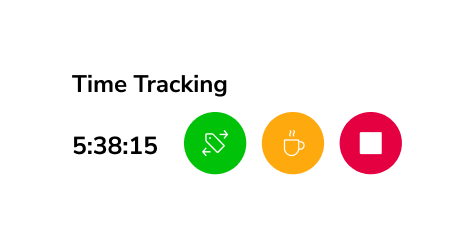How AI-Powered Software is Transforming Workspaces
Overview
The workplace has always evolved alongside technology. From the typewriter to the microprocessor, the internet to the cloud, each leap has made us faster, more connected, and more efficient. But now, we’re witnessing a shift unlike any before — the rise of artificial intelligence (AI). While previous innovations enhanced what we could do, AI is beginning to change how we think, plan, and work altogether.
At the heart of this transformation lies software innovation, and nowhere is this more visible than in the way we manage our time, collaborate, and make decisions. Let’s explore how AI is reshaping modern workspaces through smarter, more adaptive software tools.
This Article Covers:
- The Evolution of Workplace Software
- A Case Study in AI-Powered Time Tracking
- Smarter Decision-Making Through AI Insights
- AI as a Digital Collaborator
- Productivity with a Human Touch
- Challenges and Ethical Considerations of AI
- The Future of Work is AI-Enabled
- Final Thoughts

Photo by Corinne Kutz on Unsplash
The Evolution of Workplace Software
Historically, workplace software has acted as a passive tool. Word processors let us type, spreadsheets helped us calculate, and dashboards gave us snapshots of performance. But they relied entirely on human input.
AI changes that dynamic.
Now, software can make suggestions, learn from behavior, predict needs, and adapt in real-time. The shift is from tools that require instruction to systems that offer guidance.
For example:
- AI-driven email platforms like Gmail’s Smart Compose can suggest words and phrases as you write, so you can reduce typing time and finish faster.
- Project management tools powered by AI can identify schedule risks, suggest task dependencies, and optimize team workloads.
- Microsoft 365 Copilot uses AI to draft documents, summarize meetings, and generate emails, saving hours of repetitive work.
This isn’t just software that executes commands—it thinks alongside us.
A Case Study in AI-Powered Time Tracking
If there’s one area where AI has quietly revolutionized the workspace, it’s time tracking.
The Old Way: Manual and Error-Prone
Manual time tracking has long been a source of frustration. Employees have to log hours, remember to clock in and out, and often guess how much time they spent on various tasks. This leads to:
- Inaccurate data: Manual time tracking can cost companies financially due to inaccurate or incomplete records. This can result in overpaying for time not actually worked, under billing clients, or misjudging how long tasks and projects truly take.
- Payroll delays: HR teams spend countless hours reconciling timesheets, correcting errors, and chasing employees for missing data, causing delayed salary disbursements.
- Compliance risks: Manual systems make it harder to ensure accurate overtime tracking and break compliance, which can lead to costly legal penalties.
The AI Advantage: Passive, Context-Aware, and Insightful
With the help of AI, time tracking tools have evolved far beyond simple timers. Today, they work silently in the background, capturing meaningful data without the need for manual input.
AI-powered time tracking tools can now monitor:
- Application usage
- Website visits
- Keyboard and mouse activity
Platforms like RescueTime, WebWork, and Timely use machine learning to automatically categorize tasks, identify patterns, and generate complete timesheets without the employee lifting a finger.
This shift to intelligent automation brings three major advantages to time tracking:
- Reducing manual effort – No more remembering to clock in or out.
- Improving accuracy – Track time in real time, eliminating guesswork and errors.
- Adding context – Understand not just how long you worked, but exactly what you worked on.
This deeper level of insight transforms time tracking from a basic logging activity into a strategic tool. Businesses gain improved productivity metrics, better project forecasting, and employees develop greater awareness of their work habits, leading to smarter time management across the board.
Smarter Decision-Making Through AI Insights
AI isn’t just helping automate processes — it’s transforming decision-making across teams and organizations.
AI in Analytics and Business Intelligence
According to the 2024 State CIO Survey conducted by the National Association of State Chief Information Officers, 53% of participants confirmed that they use Generative AI tools in their daily work.
The biggest appeal? AI’s ability to analyze vast amounts of data and offer actionable insights.
Some use cases include:
- Sales forecasting: AI-driven CRMs like Salesforce Einstein can improve forecast accuracy by up to 20%.
- Project risk analysis: Risk analysis has always been about crunching numbers. AI makes it faster and smarter. Platforms like Taskade, for instance, speed up risk analysis by generating instant AI-powered templates.
- Productivity monitoring: Platforms can show managers which teams are overwhelmed or underutilized, without micromanagement, enabling smarter task distribution and better morale. Some AI time tracking tools can even capture screenshots, track keyboard and mouse activity as well as app and web usage to better gauge team productivity.
Traditional dashboards required human interpretation. AI-infused platforms tell you what to do next.
AI as a Digital Collaborator
AI is no longer just a backend engine. Increasingly, it’s showing up as an active digital teammate across many tools.
1. Meeting Intelligence
Tools like Otter.ai, Fireflies, and Zoom AI Companion transcribe meetings, summarize discussion points, and extract action items. Microsoft reports that with AI meeting assistance, users save an average of 10 minutes per meeting.
2. Automated Workflows
AI integrations in tools like Zapier, Notion, or ClickUp automate repetitive workflows—such as data entry, task creation, and notifications—saving teams a significant amount of time.
3. Smart Scheduling
AI assistants like Clockwise and Reclaim.ai optimize calendars based on personal work styles and team availability. Reclaim.ai claims to help users gain an average of 5.7 hours per week of productive task work. Reclaim also claims to help eliminate unnecessary meetings, about 2.3 fewer meetings per week on average.
These AI features aren’t just improving efficiency—they’re changing how we collaborate.
Productivity with a Human Touch
Unlike old-school tracking systems that often feel rigid or intrusive, AI-based tools aim to empower employees rather than micromanage them. The goal isn’t just to measure time, it’s to create a healthier, more productive work environment.
AI for Wellbeing and Focus
Modern AI-driven platforms go beyond tracking hours. They analyze behavioral patterns and work habits to identify potential issues early. For example, these tools can detect:
- Burnout risk
- Excessive multitasking
- Unproductive meeting load
They can then suggest:
- Breaks at optimal times
- Time blocks for deep work
- Rebalancing workload across team members
This is a major shift from simply tracking time to enhancing the quality of time spent.
Challenges and Ethical Considerations of AI
While the benefits are clear, AI in the workplace comes with important questions.
1. Privacy Concerns
Is AI time tracking too invasive? Not if done right. The key is transparency and consent.
Companies should:
- Clearly explain what’s being tracked and why
- Allow employees access to their own data
- Choose tools with strong privacy controls and encryption
2. Job Displacement vs. Job Augmentation
In the World Economic Forum Future of Jobs Report 2025, big changes in the job market between 2025 and 2030 are expected to affect about 22% of all jobs that exist today. About 92 million jobs may disappear but at the same time, around 170 million new jobs are likely to be created.
This significant shift is caused by a handful of factors, including AI. Around 86% of respondents in the report expect AI to transform their business by 2030.
Given all this data, it’s apparent that the focus must shift from fearing AI to learning how to work with it — which includes upskilling teams for this new reality.
3. Bias and Data Ethics
AI systems are only as fair and accurate as the data they’re trained on. If the underlying data is incomplete or skewed, the outputs can reinforce existing biases, leading to unfair performance evaluations, discriminatory practices, or inaccurate productivity metrics.
To mitigate these risks, organizations need to:
- Use diverse data sets
- Test AI data for bias
- Align with ethical standards and regulations (like GDPR or ISO 27001)
The Future of Work is AI-Enabled
There’s no doubt about it, we’re stepping into an era of predictive, intelligent workspaces powered by AI. The way we collaborate, plan, and execute tasks is about to change dramatically.
Here are just a couple of things you should be excited about:
- Hyper-personalized software experiences – Tools that adapt to your unique work rhythms, reducing friction and boosting focus.
- Unified work intelligence platforms – Seamless integration of data across tools, teams, and departments for smarter decision-making.
- AI as your personal work assistant – Imagine an AI that plans your day, blocks time for deep work, schedules meetings based on your energy peaks, and even delivers concise daily summaries of your progress.
According to a PwC report on “What’s the real value of AI for your business and how can you capitalise?”, AI could contribute $15.7 trillion to the global economy by 2030. Companies that adopt AI early — especially in areas like software and productivity — will have a significant competitive edge.
Final Thoughts
AI is not a passing trend. It’s fundamentally transforming the way we work, making software smarter, time tracking easier, and decision-making more data-driven.
This isn’t about replacing people, it’s about amplifying human potential. When tools understand how we work, they can help us work better.
The AI-powered workspace isn’t the future. It’s already here.


